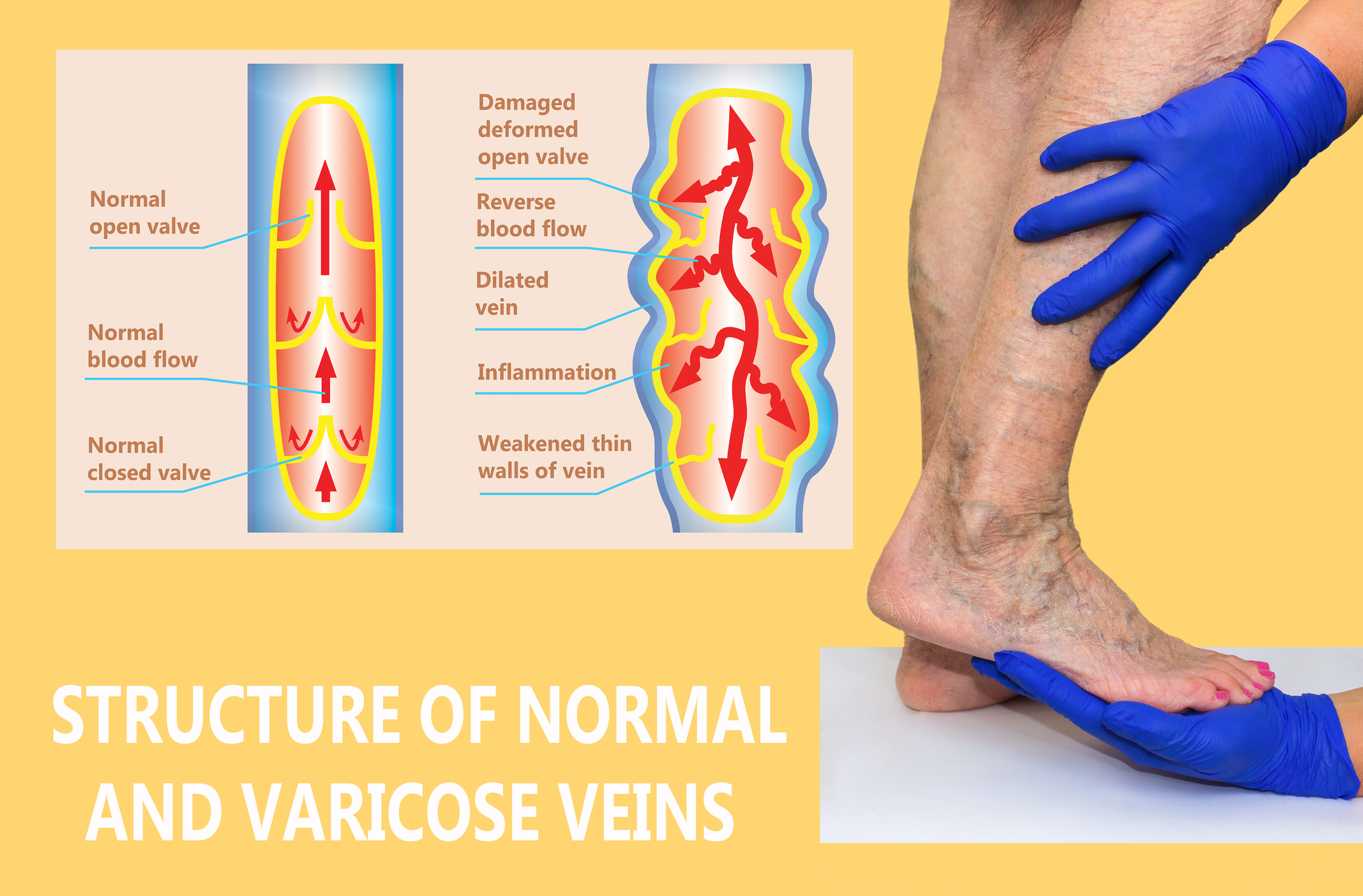Spider and varicose veins explained
By Jay Nachman
Varicose veins and spider veins generally do not present a health risk. While the appearance may be concerning, they are not typically harmful. Here’s what to do if these veins are bothering or worrying you.
Varicose veins are enlarged, visible veins underneath the skin. They are usually blueish or purple in color. Spider veins form a web of little veins. The difference in categorizing them is their size.
“They are more of a cosmetic concern and usually do not correlate with any other medical conditions,” said Dr. Michael J. Nooromid, a vascular surgeon at Jefferson Health.
Arteries bring oxygenated blood f low from the heart to the rest of the body, Dr. Nooromid said. Veins bring the deoxygenated blood back to the heart then to the lungs. The oxygenated blood then travels back through the heart to be sent back out to the body. Veins and arteries are both types of blood vessels, but they operate independently of each other.
“Just because you have a problem with your arteries, does not mean you have a problem with your veins,” Dr. Nooromid said. “And just because you have a problem with your veins doesn’t mean you have a problem with your arteries.”
When patients come to see Dr. Nooromid about varicose veins, often they are concerned about blood flow to the legs. This is the most common place to see varicose veins. In almost all instances, varicose veins do not affect the heart and blood flow to the rest of the body. Varicose veins are usually genetic in nature. They can also be a result of hormonal changes. Women often get them when pregnant or when on hormone therapy. Another cause of varicose veins is being overweight.
“As we age, varicose veins can continue to get bigger and more apparent,” Dr. Nooromid said. “The people we see a lot are patients who are on their feet for the majority of the day. Restaurant servers, cooks and people who are working in sales. Any kind of active job.”
While varicose veins do not generally correlate to a medical condition, it is important to see a doctor if a person has concerns. “Just to make sure everything else is okay,” Dr. Nooromid said.
Varicose veins that are painful or growing should be evaluated by a specialist. As a worst-case scenario, it could be a sign of phlebitis, or inflammation of a vein. This is usually manifested by swelling, redness and pain in the area of a varicose vein. Sometimes, varicose veins can develop because of previous deep veinous thrombosis. This is a condition where a blood clot forms in a deep vein, usually in the legs.
An ultrasound can detect underlying problems associated with varicose veins. This can include obstructions or problems with valves in the veins.
“Vascular surgeons are the medical and surgical specialists of the entire scope of vascular problems,” Dr. Nooromid said. “We really treat a diverse spectrum of conditions. We have the tools to offer thorough treatment options and give the best tailored treatment plans for our patients.”
The two ways to treat varicose veins are medical management or surgical management.
Dr. Nooromid always tries to treat varicose veins with medical management first. One such treatment is wearing compression socks. This garment squeezes the legs to prevent swelling. Patients should try to avoid standing for long periods of time and elevate their legs when possible.
If symptoms persist, surgery may be recommended. These include burning or itching in the lower legs, swelling, or cramping, Spider veins can be treated with injections of medication or with laser therapy. Minimally invasive surgery can remove the veins.
“Vascular surgery is constantly innovating in terms of treatments,” Dr. Nooromid said. “And the technologies we have available are always improving to continue to treat our patients with minimally invasive procedures, So they don’t have to undergo significant recoveries.”
Jay Nachman is a freelance writer in Philadelphia who tells stories for a variety of clients.




